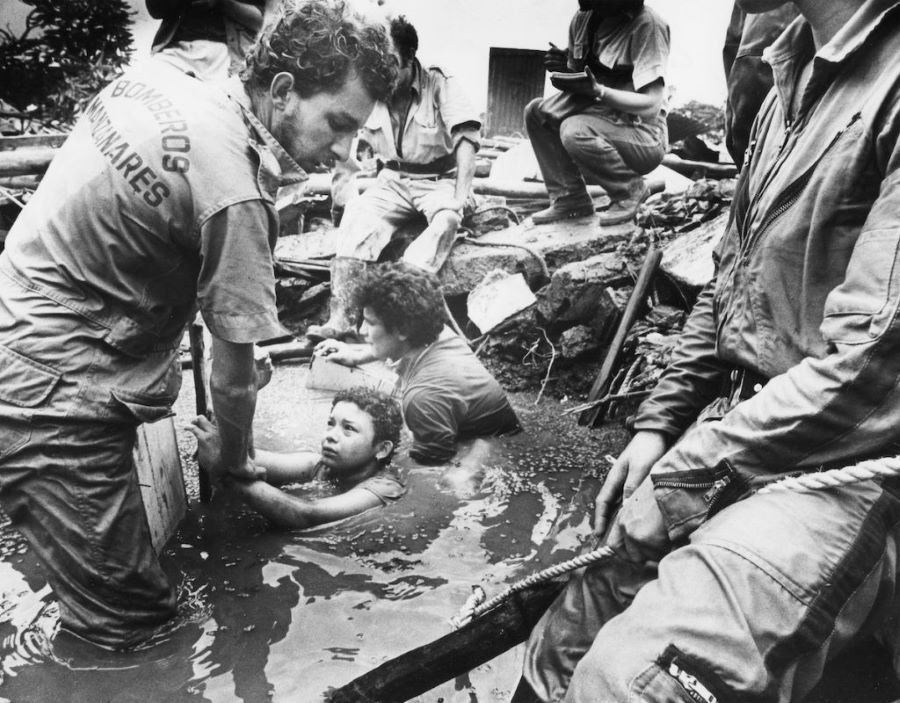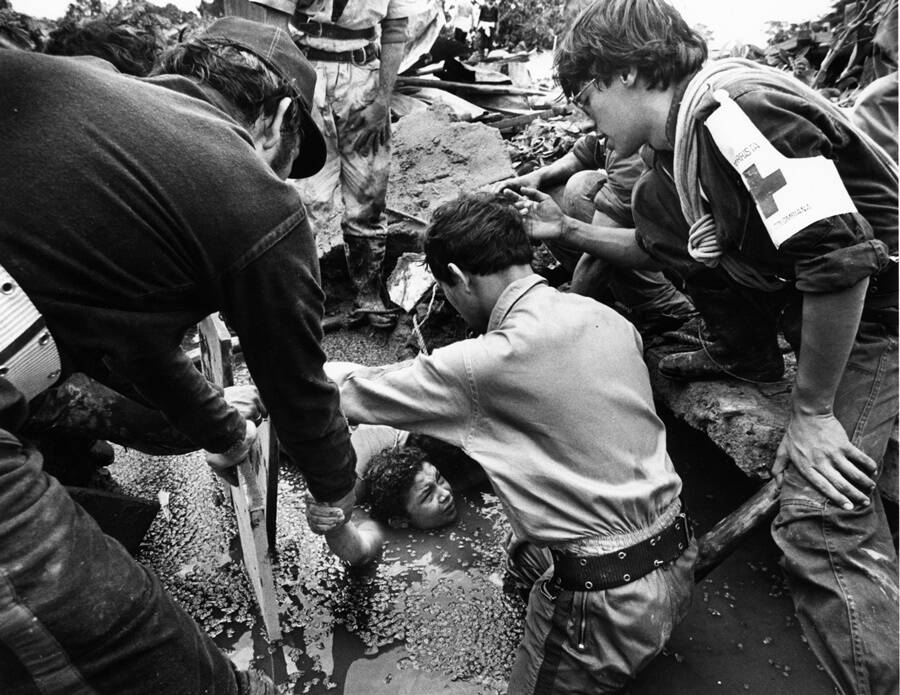Thirty-eight years ago, the world watched a 13-year-old girl die in agony
The eruption of the volcano Nevada del Ruiz in Colombia on 13 November 1985 destroyed the town Armero and 13 other villages. Within days, the lahars – volcanically-induced mudflows, landslides, and debris – killed about 25,000 people.
One of them was Omayra Sánchez Garzón, a 13-year-old girl trapped beneath the debris of her house, with most of her body remaining in cold water, whose heartbreaking story has been documented by journalists and rescuers. It outlined the authorities’ neglect for scientific warnings and their incompetence to respond during natural disasters.

Military trying to release Omayra from debris.
Omayra miraculously survived the massive lahar that destroyed her home and killed her father and aunt, but rescue teams who arrived at the scene discovered that her legs were firmly wedged beneath the weight of the collapsed roof.
After the mudflow struck, she found herself initially encased in concrete. However, she managed to extend her hand through a fissure in the debris. Noticing her hand emerging from the wreckage, rescuers spent an entire day clearing away tiles and wood.

Rescuers attempting to prevent Omayra from sinking.
As they freed the girl from the waist up, attempts to extract her fully proved challenging without risking injury to her legs. Pulling her caused water to accumulate around her, raising the concern of potential drowning. In response, the workers encircled her with a tire to maintain buoyancy.




![[video] Guess who’s hiding more than 8 kilometers below the ocean’s surface?](/news_img/2025/11/13/news0_mediu.jpg)
![[video] Putin rules from shadows: Investigation finds Russian leader rarely works in Moscow](/news_img/2025/11/11/news1_mediu.jpg)

